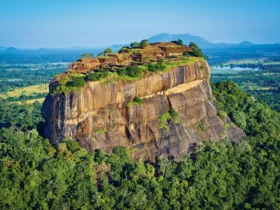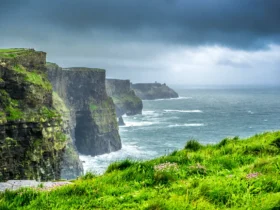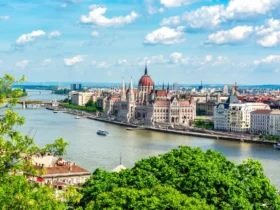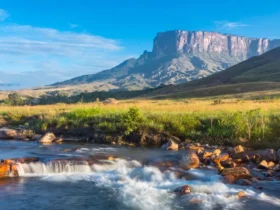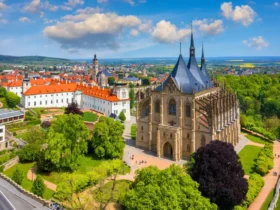Desert is a barren and arid region characterized by low precipitation and sparse vegetation. There are different types of deserts, including hot deserts, cold deserts, coastal deserts, and polar deserts. Each type has unique characteristics based on its location and climate.
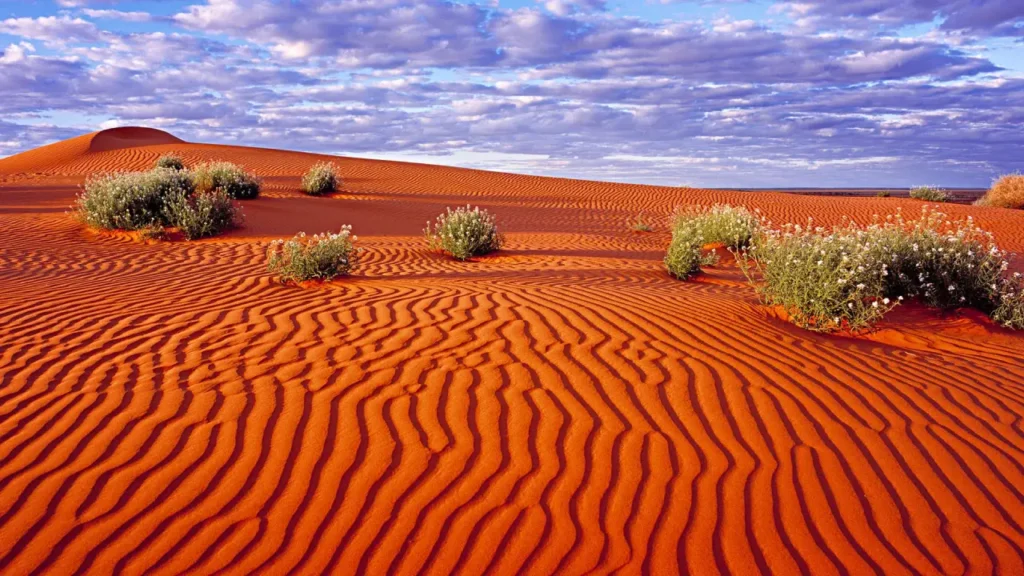
The top famous deserts in the world
These deserts offer a wide range of experiences, from breathtaking natural landscapes and unique ecosystems to cultural and historical significance. Exploring these deserts allows visitors to witness the beauty and resilience of nature in some of the harshest environments on Earth.

Each of these deserts has its own unique characteristics, landscapes, and ecological significance. They offer opportunities for exploration, wildlife encounters, and an appreciation for the beauty and diversity of our planet’s deserts.

1. Sahara Desert
The Sahara Desert is the largest hot desert in the world, spanning across several African countries, including Morocco, Algeria, Tunisia, Libya, Egypt, Mali, and Niger. It is known for its vast stretches of sand dunes, rocky plateaus, and diverse ecosystems. The Sahara offers opportunities for desert treks, camel rides, and experiencing nomadic cultures.



2. Gobi Desert
Situated in Asia, the Gobi Desert is one of the largest deserts globally, stretching across parts of northern China and southern Mongolia. It is a diverse desert landscape, characterized by vast sand dunes, rocky formations, and grasslands.



3. Mojave Desert
Located in the southwestern United States, the Mojave Desert covers parts of California, Nevada, Utah, and Arizona. It is known for its iconic Joshua trees, sand dunes, and unique geological formations like the Death Valley National Park.
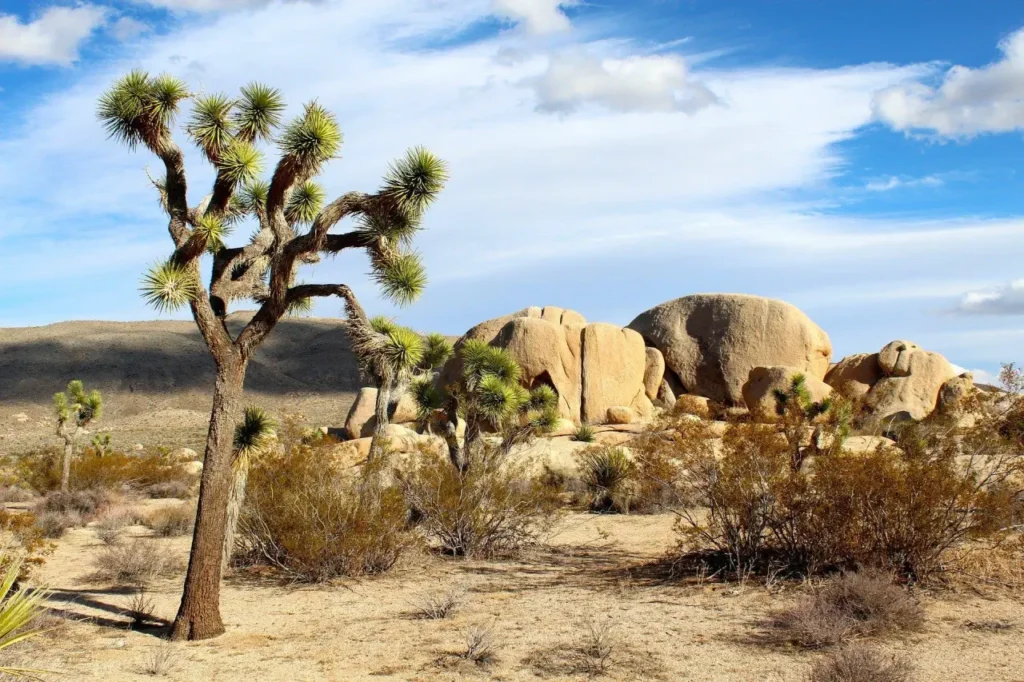
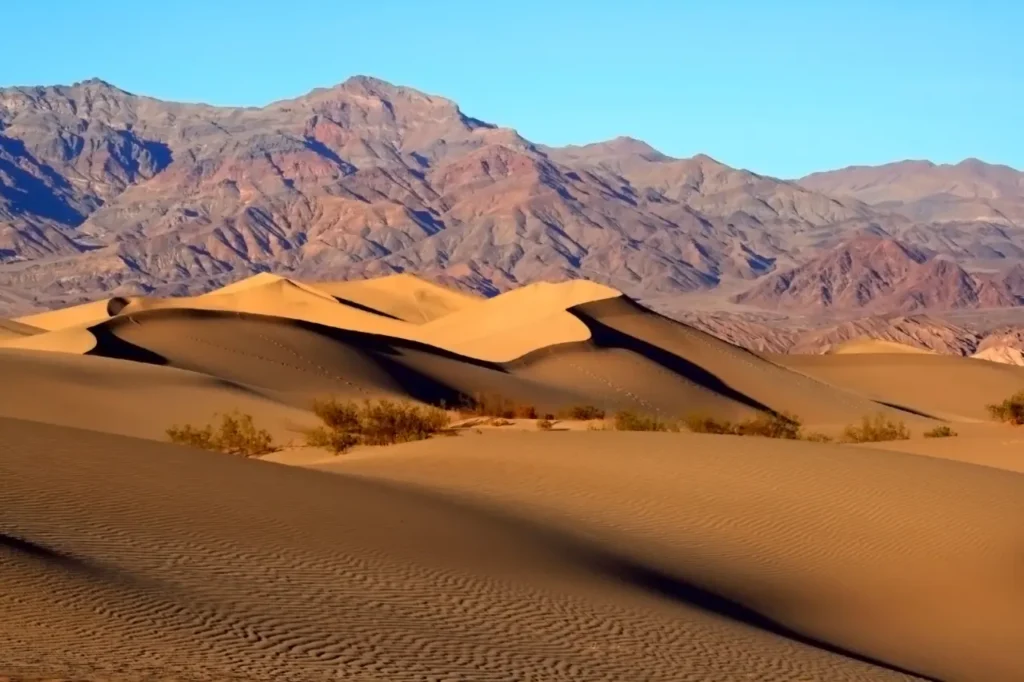
4. Atacama Desert
Situated in South America, the Atacama Desert is one of the driest deserts on Earth. It stretches across parts of Chile, Bolivia, Peru, and Argentina. The Atacama is renowned for its otherworldly landscapes, salt flats, geysers, and clear night skies ideal for stargazing.

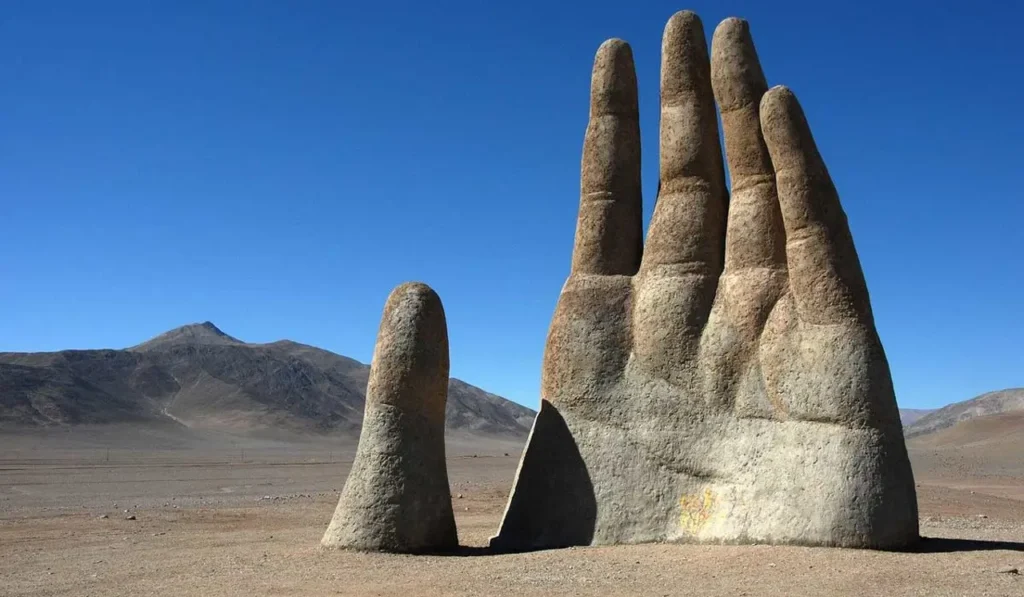
5. Arabian Desert
Situated in the Arabian Peninsula, the Arabian Desert covers parts of Saudi Arabia, Yemen, Oman, the United Arab Emirates, and Jordan. It is a vast desert with varied landscapes, including sand dunes, rocky plains, and salt flats. The region is rich in Bedouin traditions and offers experiences like desert camping and dune bashing.
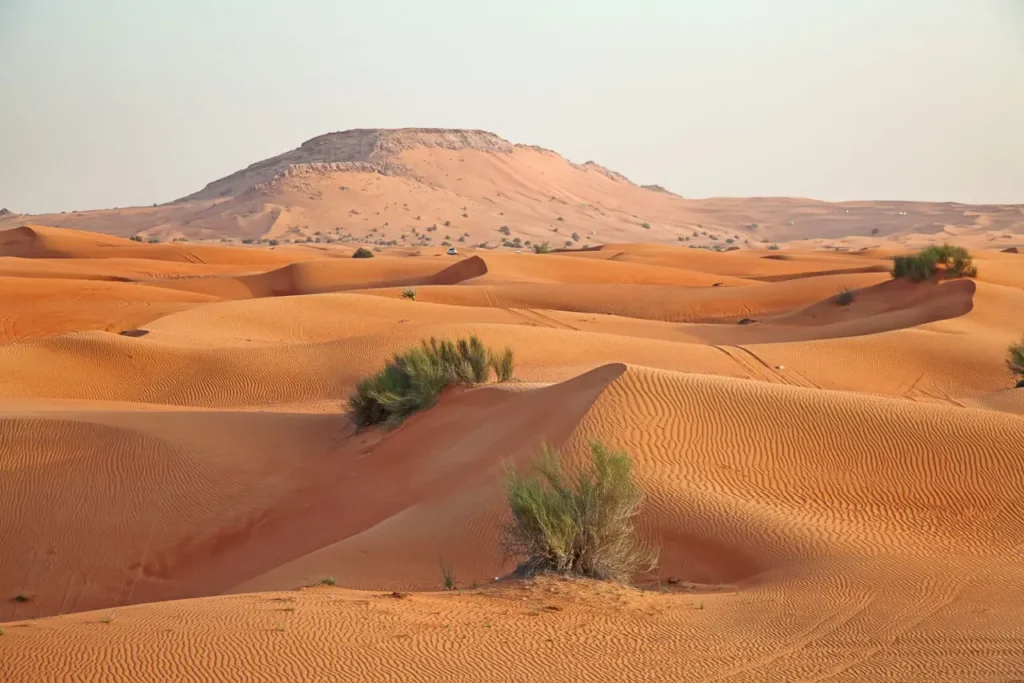
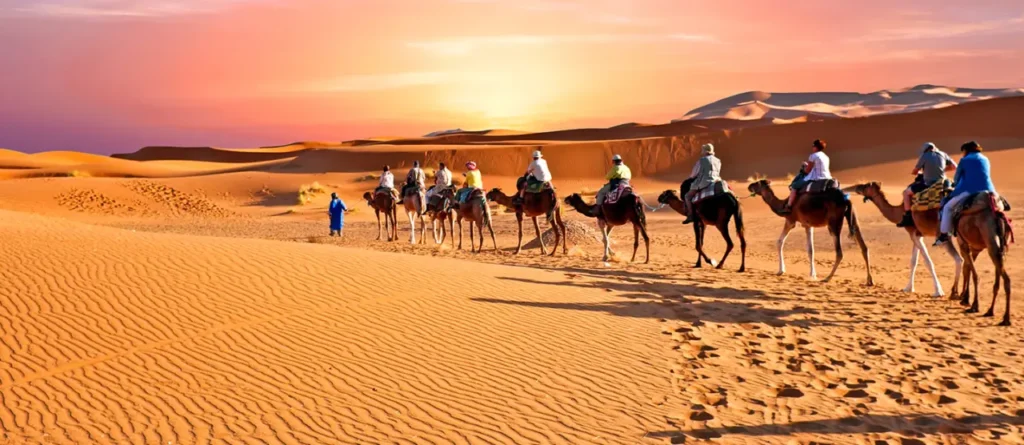
6. Namib Desert
Situated along the Atlantic coast of southwestern Africa, the Namib Desert is one of the oldest deserts globally. It is known for its towering sand dunes, including the famous Sossusvlei dunes, as well as its unique desert-adapted flora and fauna.
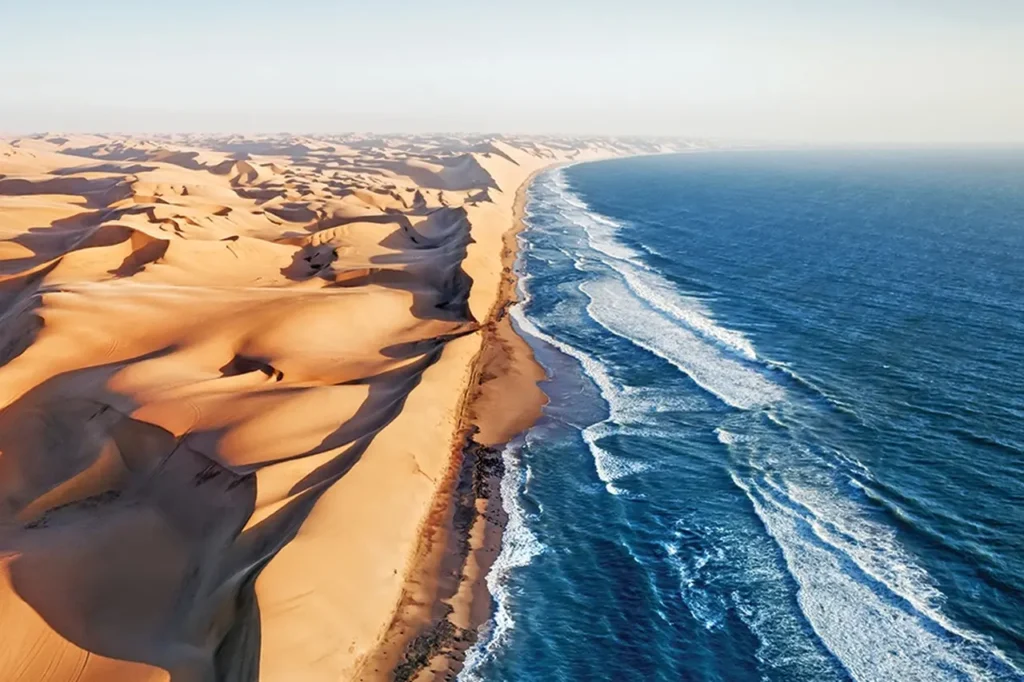
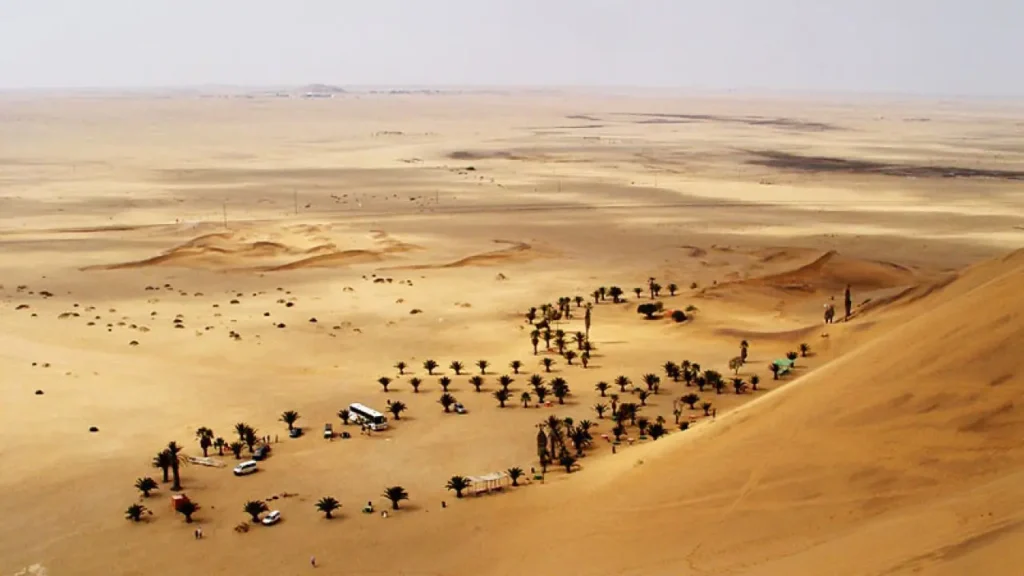
7. Patagonian Desert
Located in southern Argentina and Chile, the Patagonian Desert is the largest desert in the Americas. It is a cold desert characterized by windy plains, steppe-like landscapes, and unique geological formations.
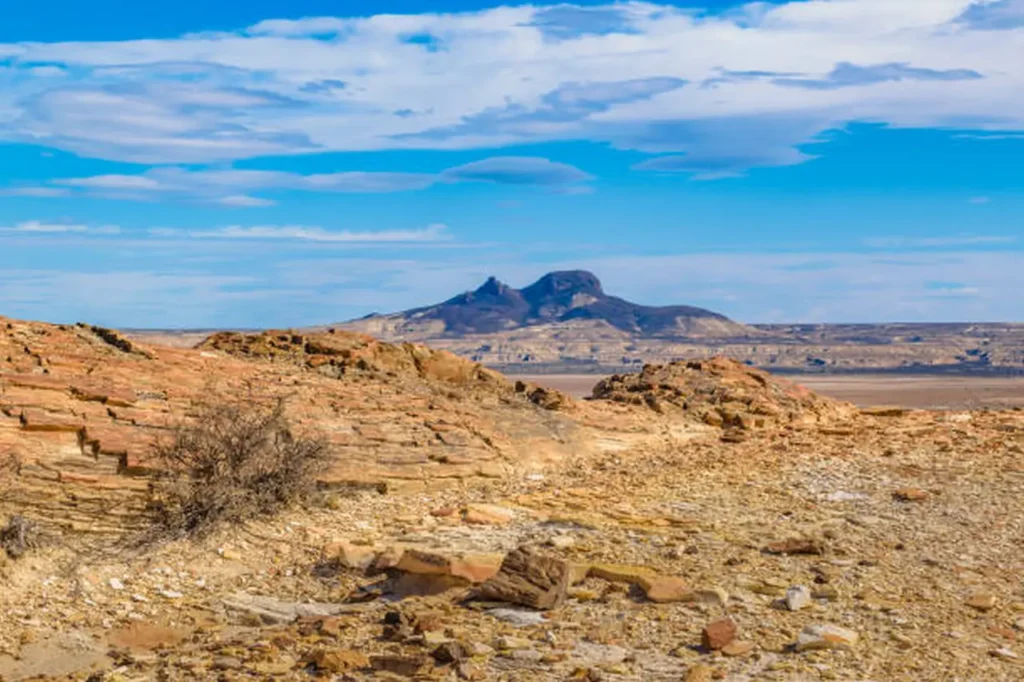

8. Kalahari Desert
Located in southern Africa, the Kalahari Desert spans parts of Botswana, Namibia, and South Africa. It is a semi-arid desert known for its red sands, vast grasslands, and diverse wildlife, including the iconic Kalahari lions and meerkats.
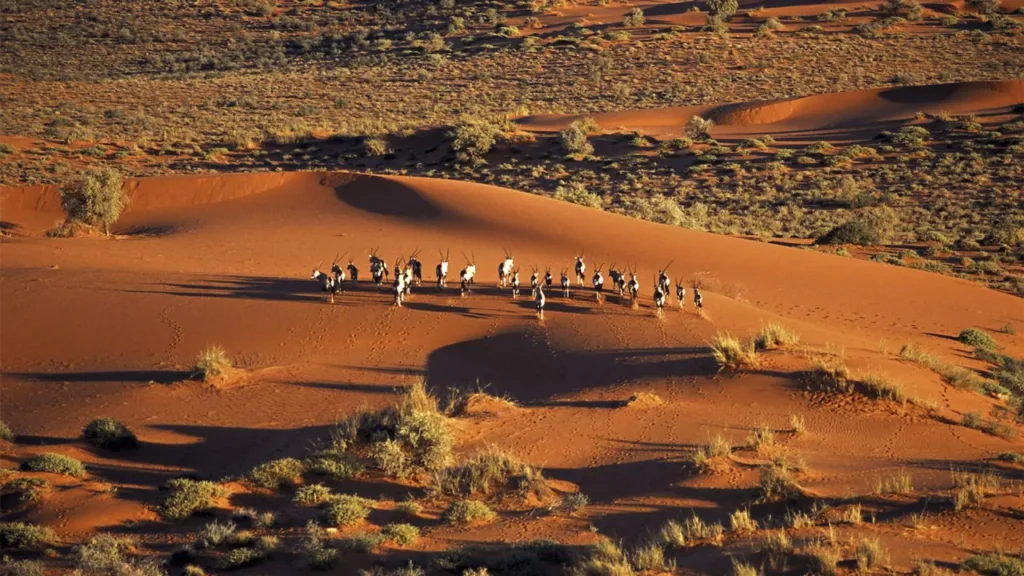
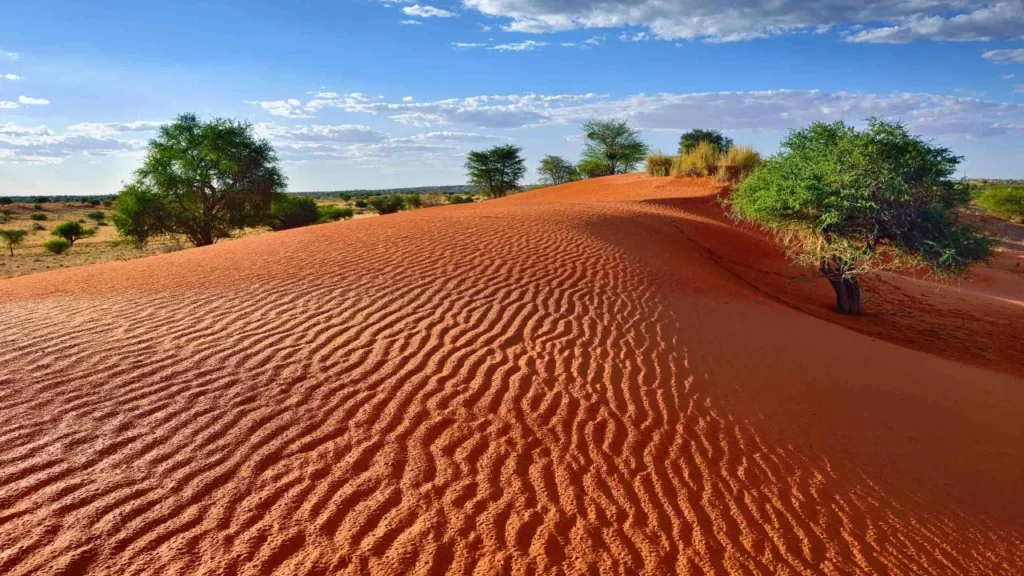
9. Thar Desert
Situated in northwestern India and southeastern Pakistan, the Thar Desert is the largest desert in India. It is characterized by a mix of sand dunes, scrub vegetation, and arid plains. The Thar Desert is culturally rich, known for its vibrant folk traditions, colorful festivals, and historic desert settlements.

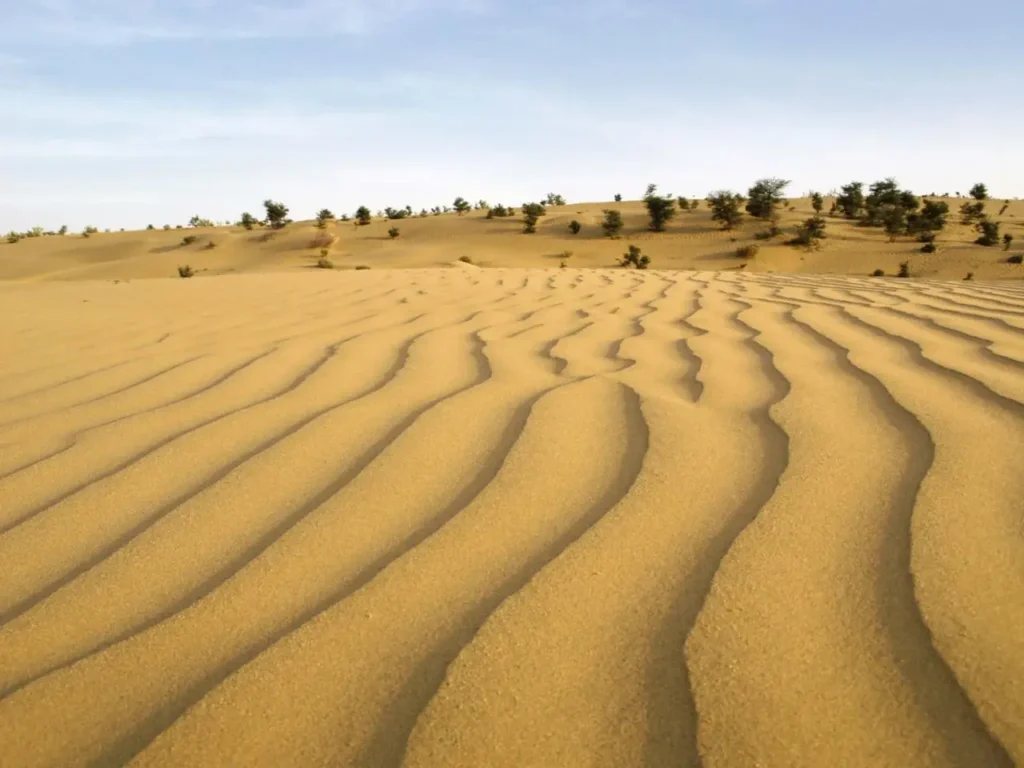
10. Great Sandy Desert
Located in Western Australia, the Great Sandy Desert is a vast and remote desert known for its extensive sand dunes and arid landscapes. It is home to unique flora and fauna, including the iconic bilby and marsupials like the red kangaroo.

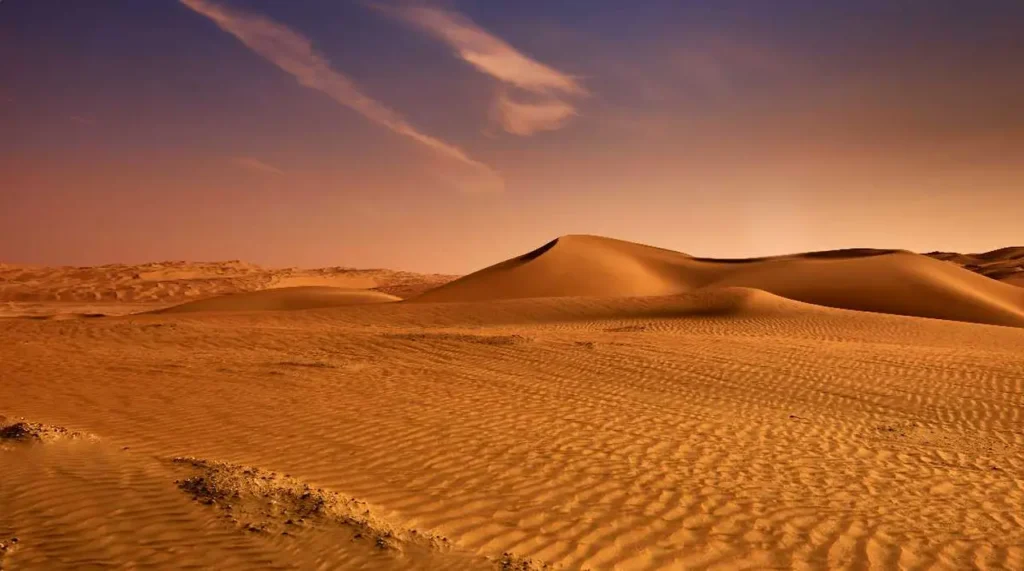
11. Namib-Naukluft Desert
This desert is a combination of the Namib Desert and the Naukluft Mountains in Namibia. It features expansive red sand dunes, towering cliffs, and the famous Skeleton Coast, known for its shipwrecks and dramatic coastal scenery.
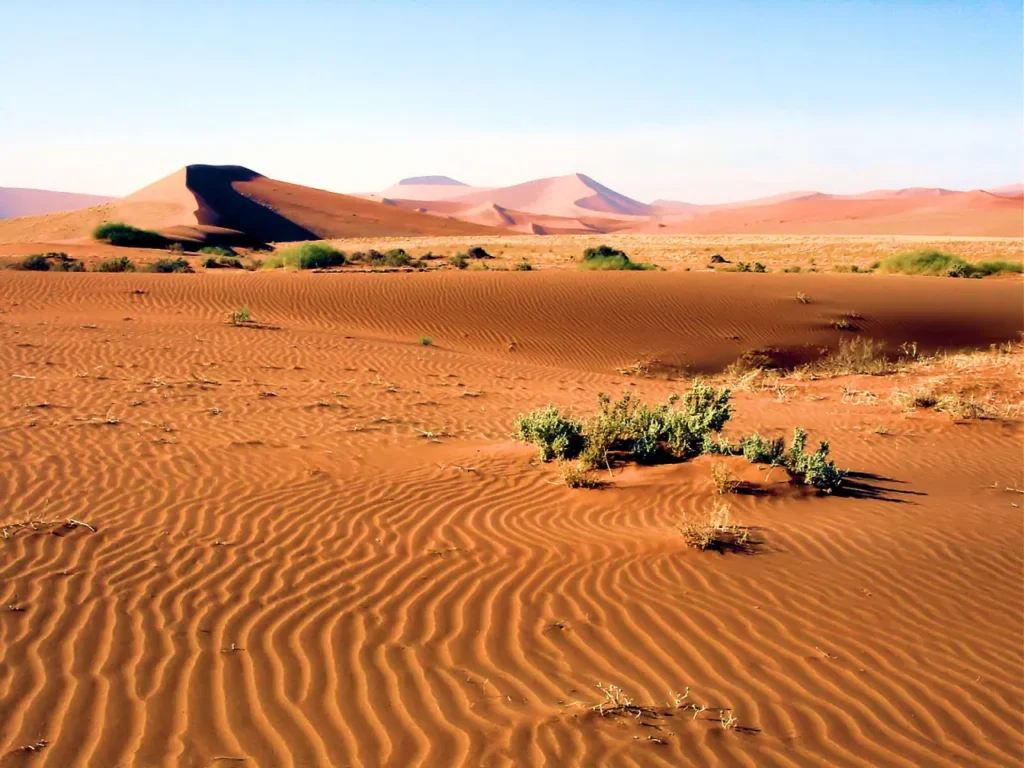

12. Simpson Desert
Situated in central Australia, the Simpson Desert is one of the largest sand deserts in the world. It is characterized by its impressive parallel sand dunes and sparse vegetation. The region is popular for adventurous four-wheel-drive trips and wilderness exploration.
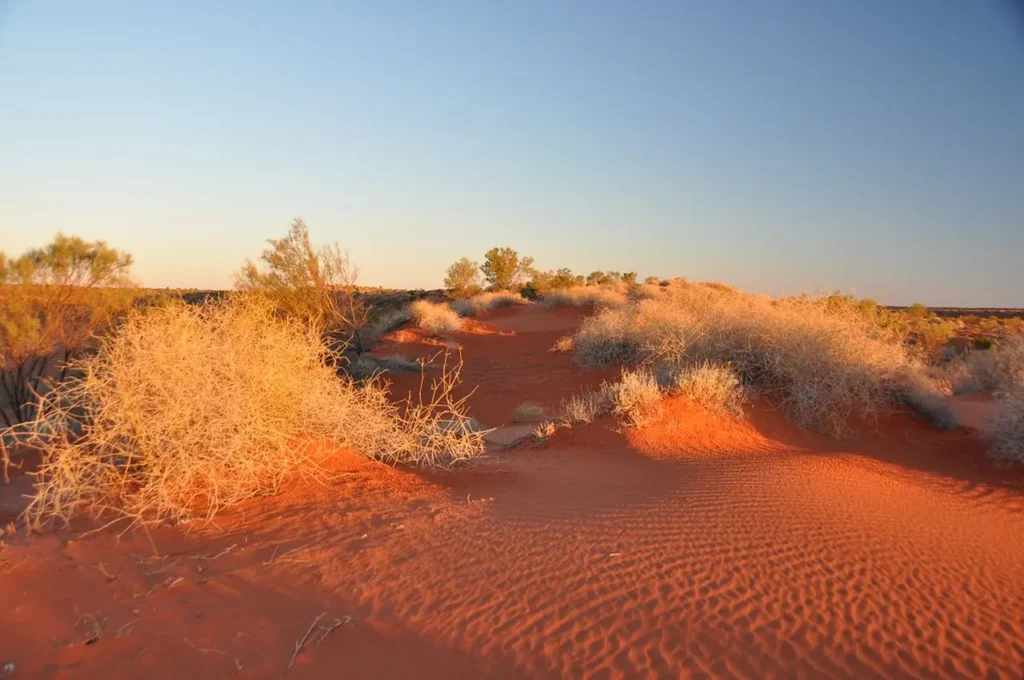
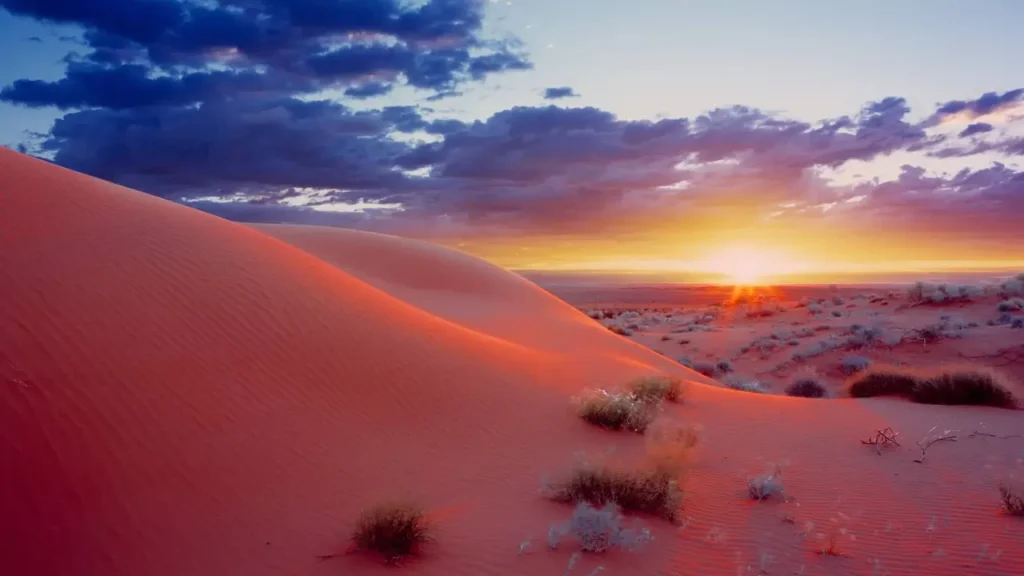
13. Taklamakan Desert
Located in the Xinjiang Uygur Autonomous Region of China, the Taklamakan Desert is one of the largest and driest deserts in the world. It is known for its shifting sand dunes, oases, and ancient Silk Road trading routes that once crossed the desert.


14. Dasht-e Kavir
Situated in central Iran, Dasht-e Kavir is a vast desert known for its salt flats, sand dunes, and extreme temperatures. It is a unique and challenging landscape, with occasional oasis settlements scattered throughout the desert.
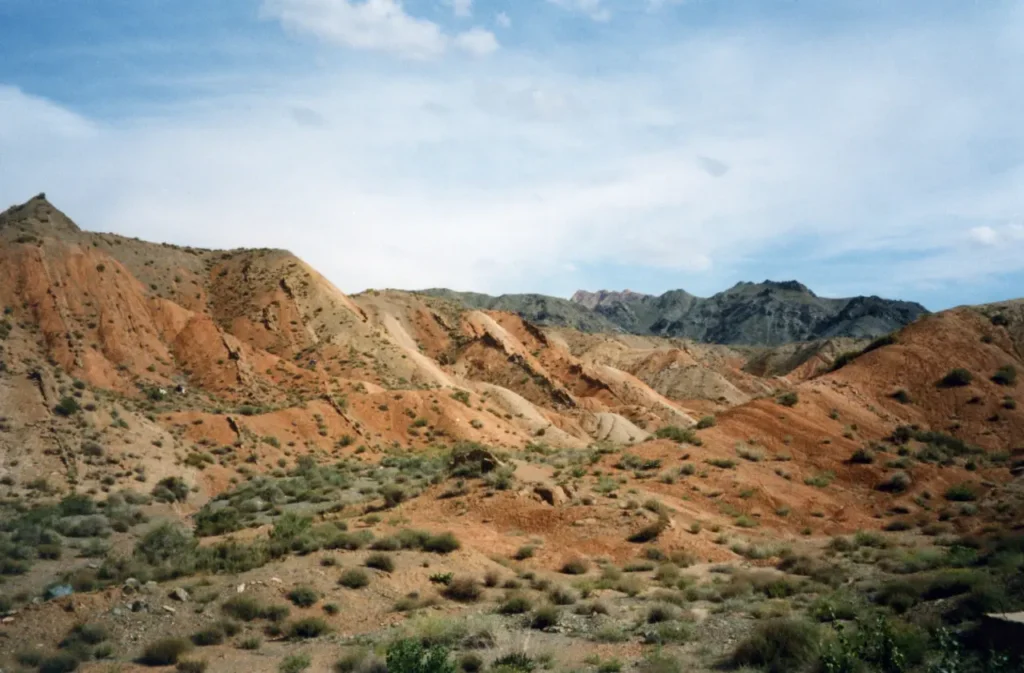
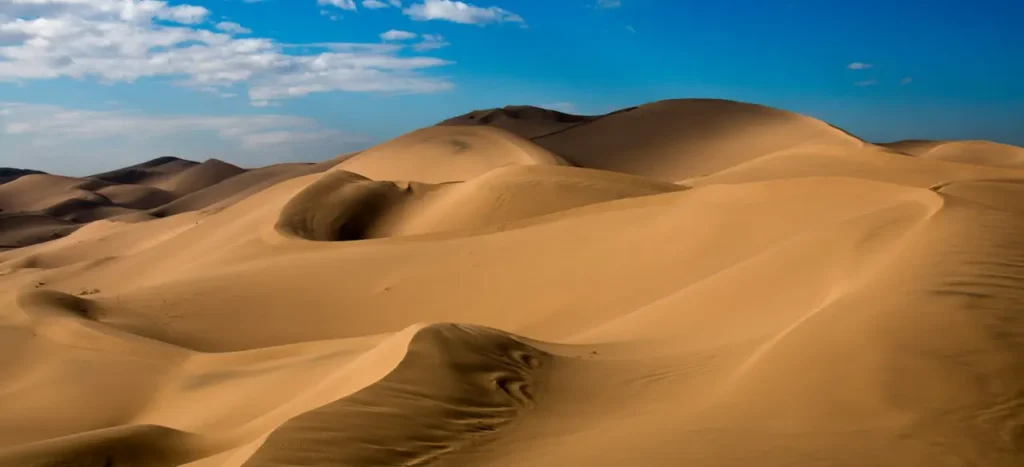
15. Chihuahuan Desert
The Chihuahuan Desert is the largest desert in North America, stretching across parts of the southwestern United States and northern Mexico. It is a diverse desert ecosystem with a variety of plant and animal species, including the iconic Joshua trees and the rare Mexican prairie dog.


16. Sonoran Desert
Located in southwestern North America, the Sonoran Desert spans parts of Arizona, California, and the Mexican states of Sonora and Baja California. It is known for its unique vegetation, including the saguaro cactus, and is home to a rich diversity of wildlife, such as the desert bighorn sheep and Gila monster.


17. Karakum Desert
Situated in Central Asia, the Karakum Desert is one of the largest sand deserts in the world. It covers parts of Turkmenistan, Uzbekistan, and Kazakhstan. The desert is characterized by its vast sand dunes, salt marshes, and unique desert-adapted flora and fauna.
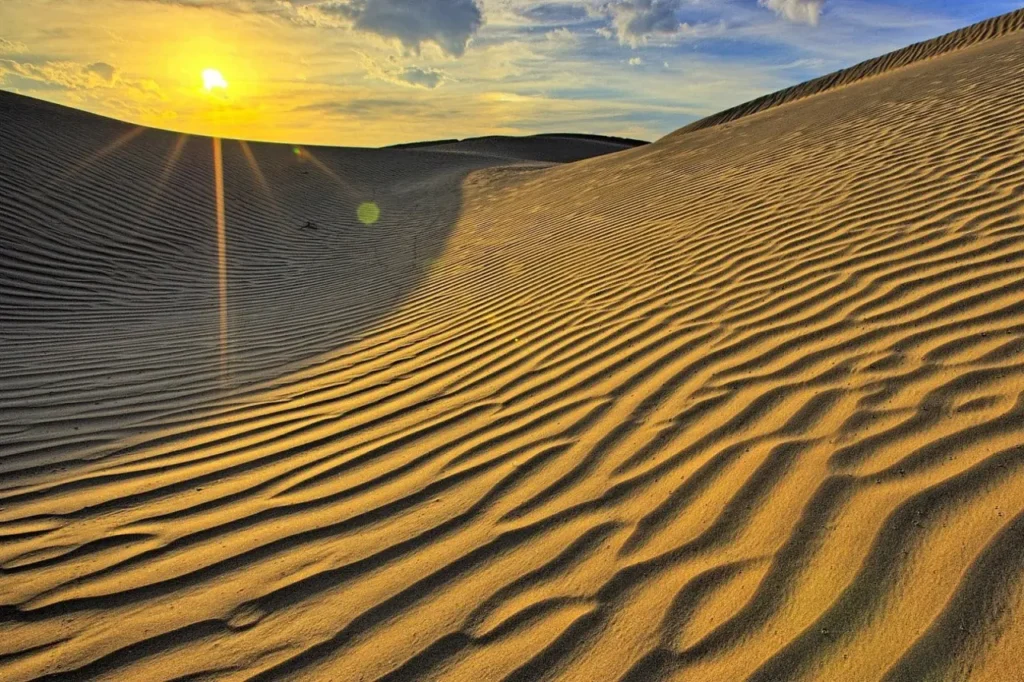
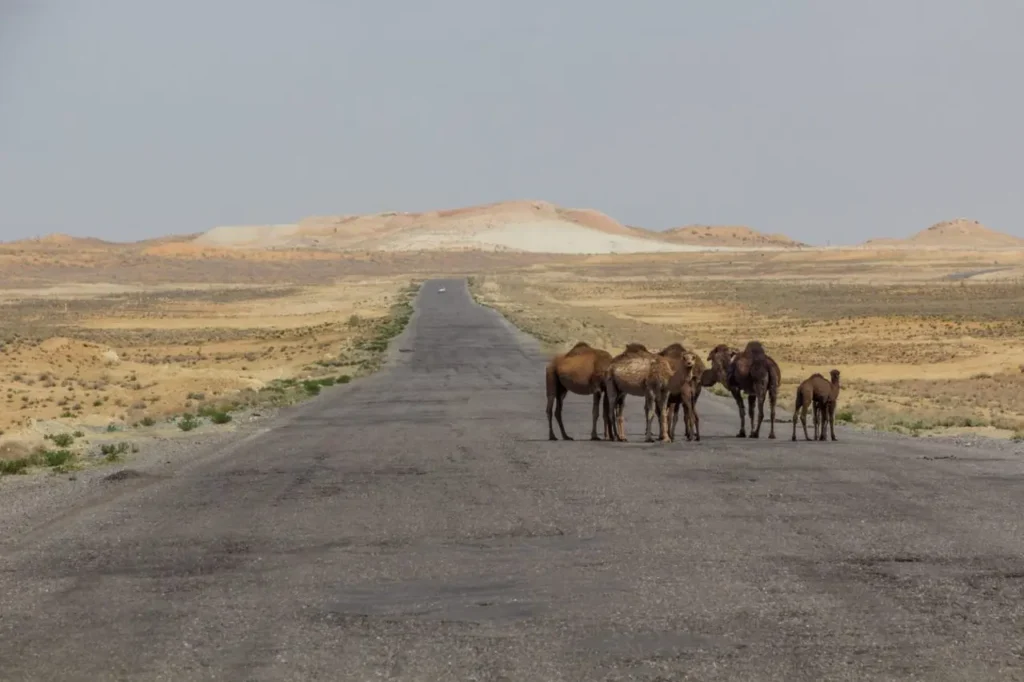
18. Negev Desert
Located in southern Israel, the Negev Desert is a desert region known for its rugged landscapes, canyons, and ancient archaeological sites. It is a popular destination for outdoor activities such as hiking, camel trekking, and stargazing.
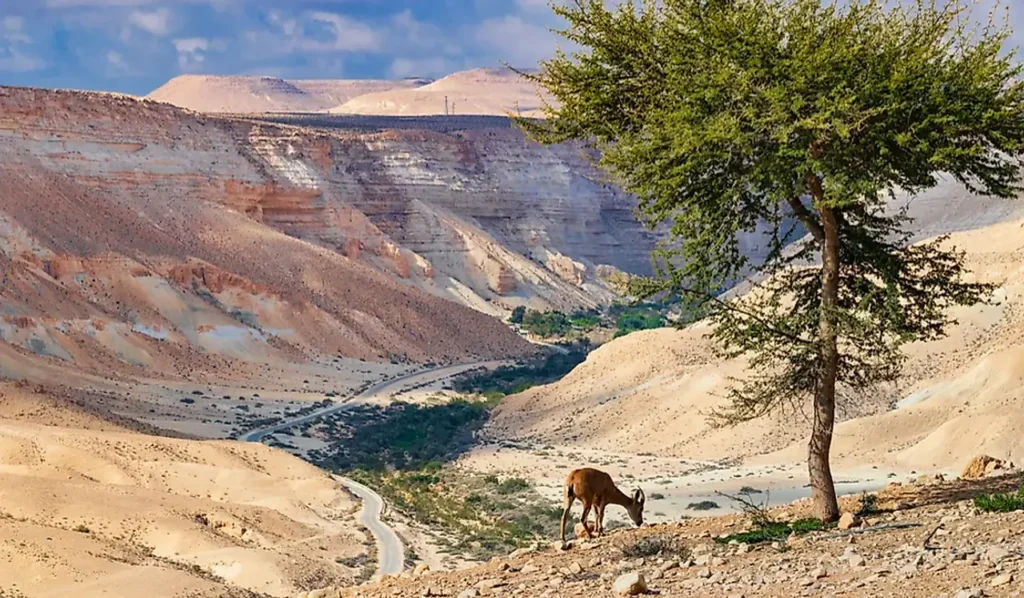
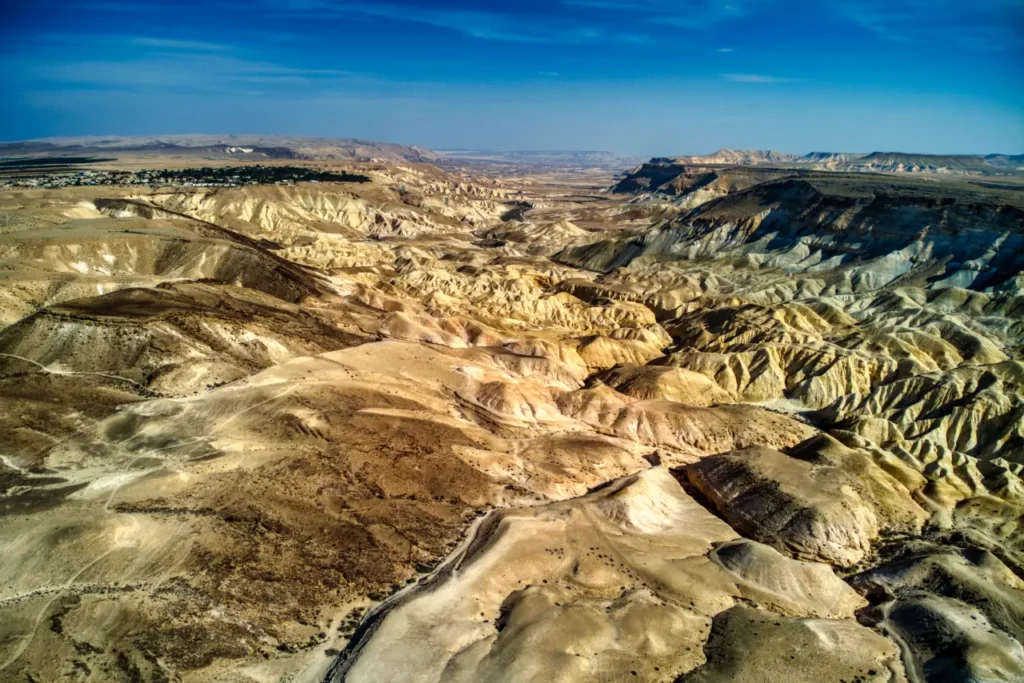
19. Antarctic Desert
The Antarctic Desert is the largest desert in the world, covering the entire continent of Antarctica. It is an extreme desert environment with frigid temperatures, ice, and snow. Despite its harsh conditions, the Antarctic Desert is home to unique wildlife, including penguins, seals, and various seabirds.


20. Arctic Desert
The Arctic Desert encompasses the polar regions of the northern hemisphere, including parts of Alaska, Canada, Greenland, and Siberia. It is characterized by frozen tundra, ice caps, and extremely cold temperatures. Despite the challenging conditions, the Arctic Desert supports a diverse range of wildlife, including polar bears, reindeer, and arctic foxes.
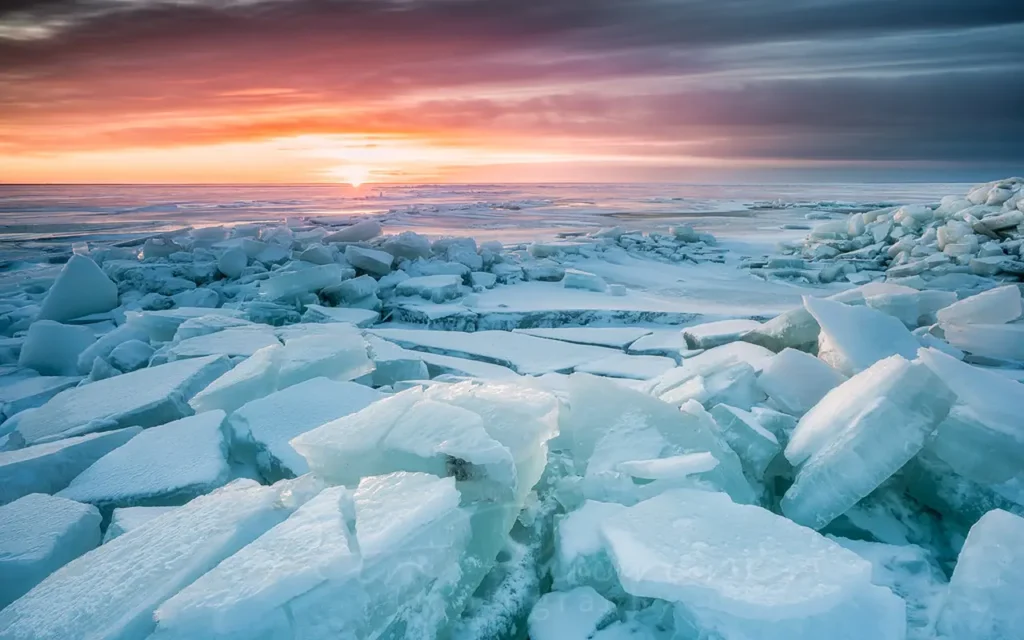
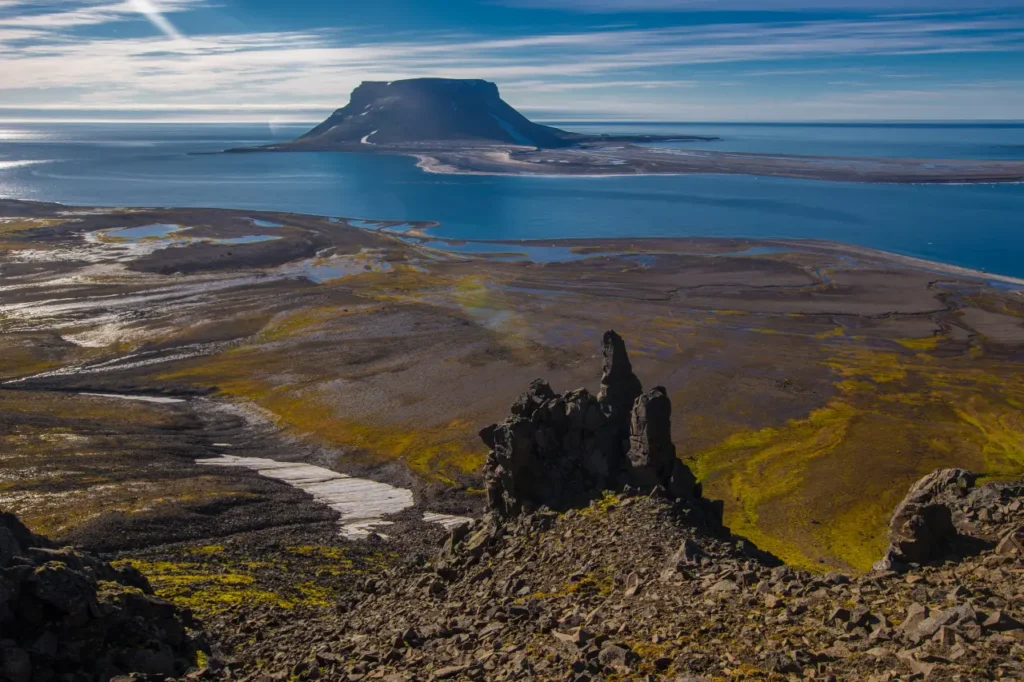
21. White Desert
Located in Egypt’s Western Desert, the White Desert is known for its surreal and otherworldly landscapes. It is characterized by massive chalk rock formations that resemble sculptures and create a stunning white landscape.
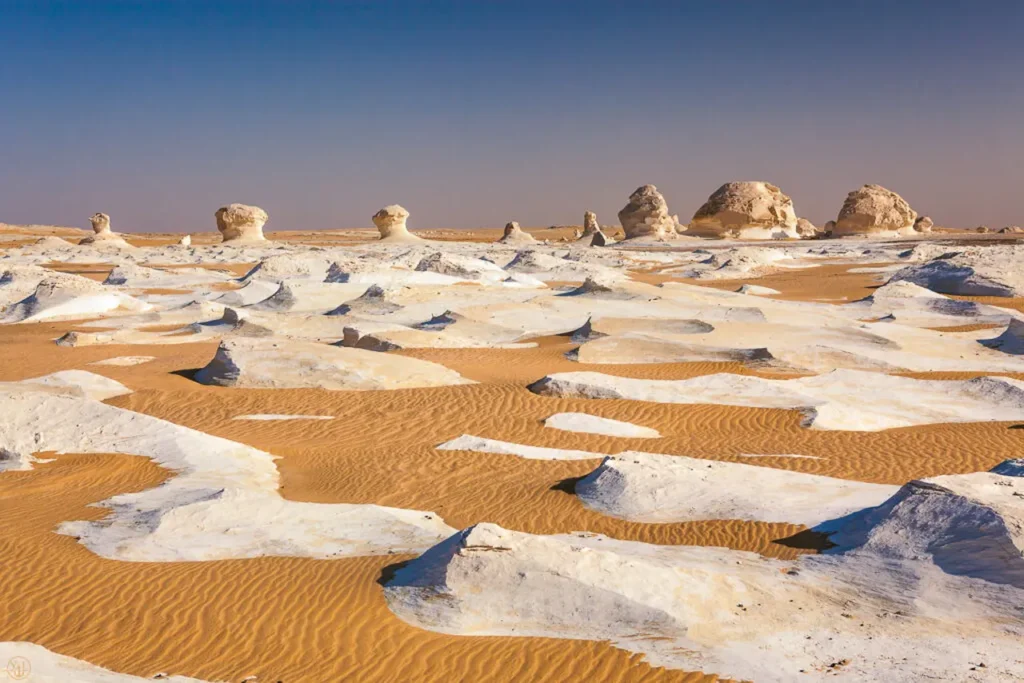
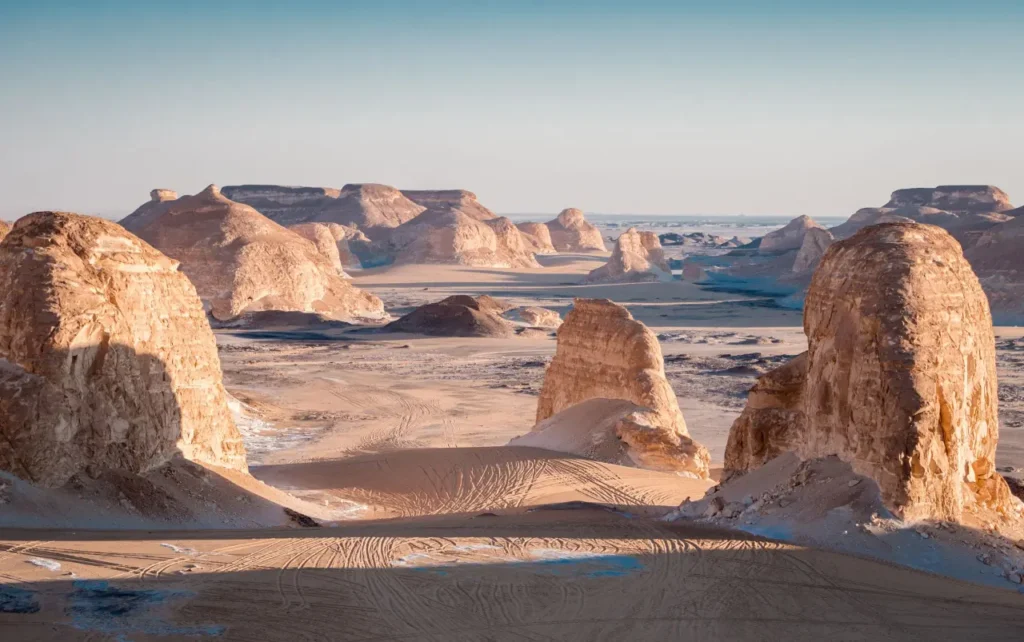
22. Wadi Rum
Situated in southern Jordan, Wadi Rum is a desert valley known for its majestic sandstone and granite rock formations. It is often referred to as the “Valley of the Moon” and offers incredible opportunities for camping, hiking, and desert safaris.
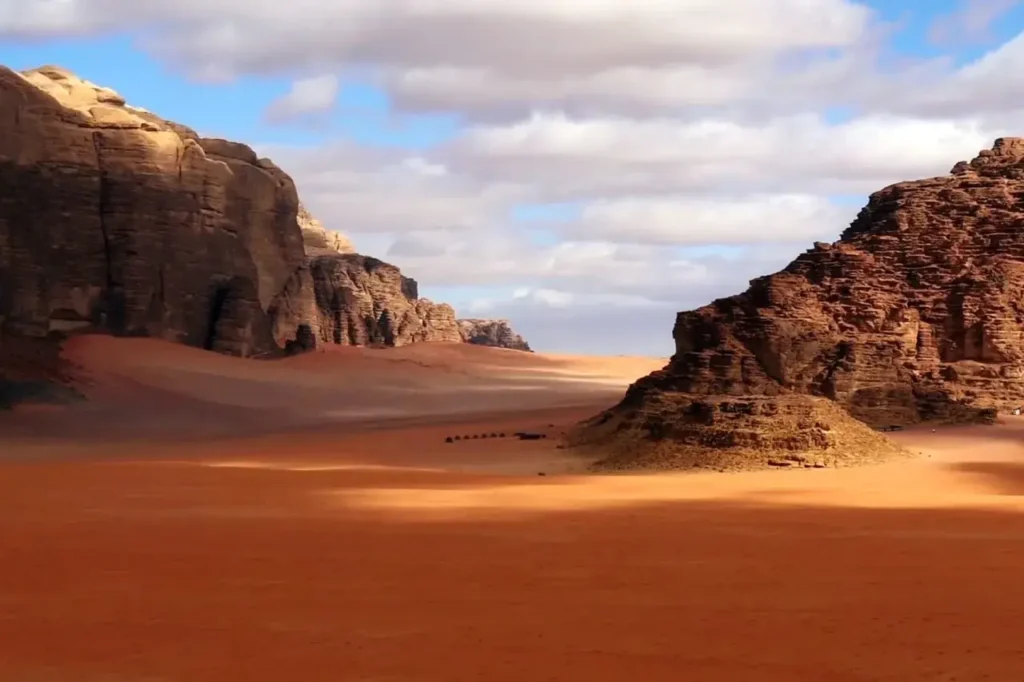
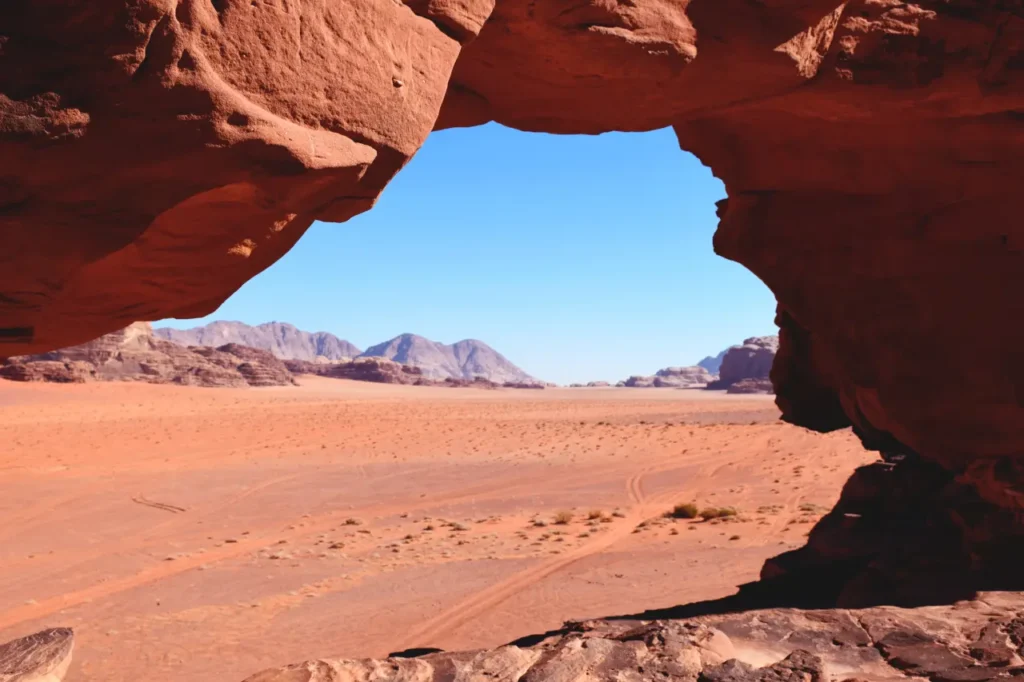
23. Tabernas Desert
Located in southeastern Spain, the Tabernas Desert is Europe’s only true desert. It is known for its arid landscapes, dramatic rock formations, and unique flora and fauna. The area has also served as a backdrop for many Western movies.


24. Danakil Desert
Situated in northeastern Ethiopia, the Danakil Desert is one of the hottest and most inhospitable places on Earth. It is known for its otherworldly landscapes, including active volcanoes, sulfuric hot springs, and colorful mineral deposits.


25. Great Victoria Desert
Spanning across Western Australia and South Australia, the Great Victoria Desert is the largest desert in Australia. It features vast expanses of sand dunes, salt lakes, and spinifex grasslands. The desert is home to various Aboriginal communities and unique wildlife.
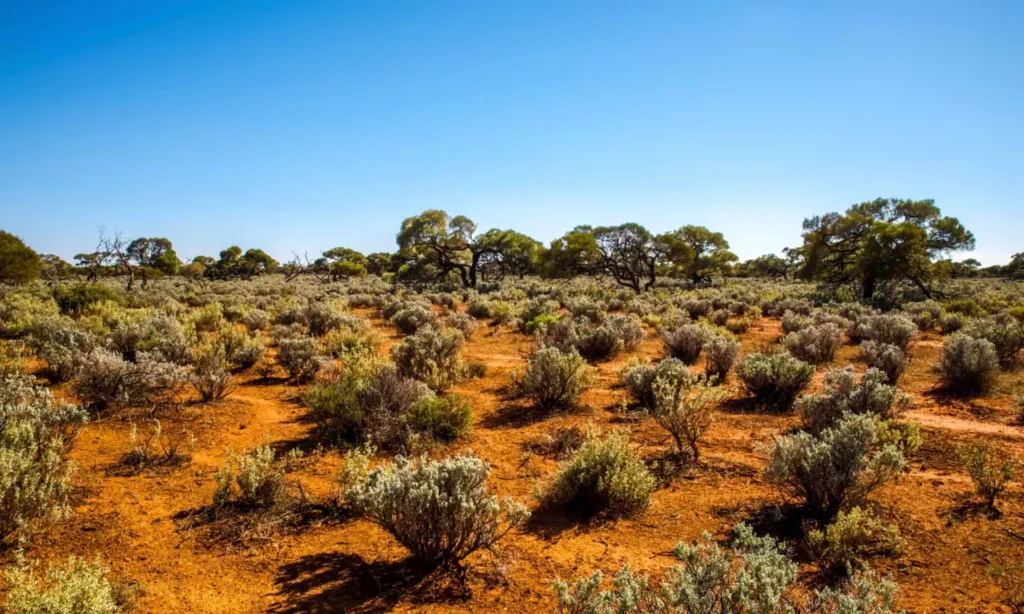
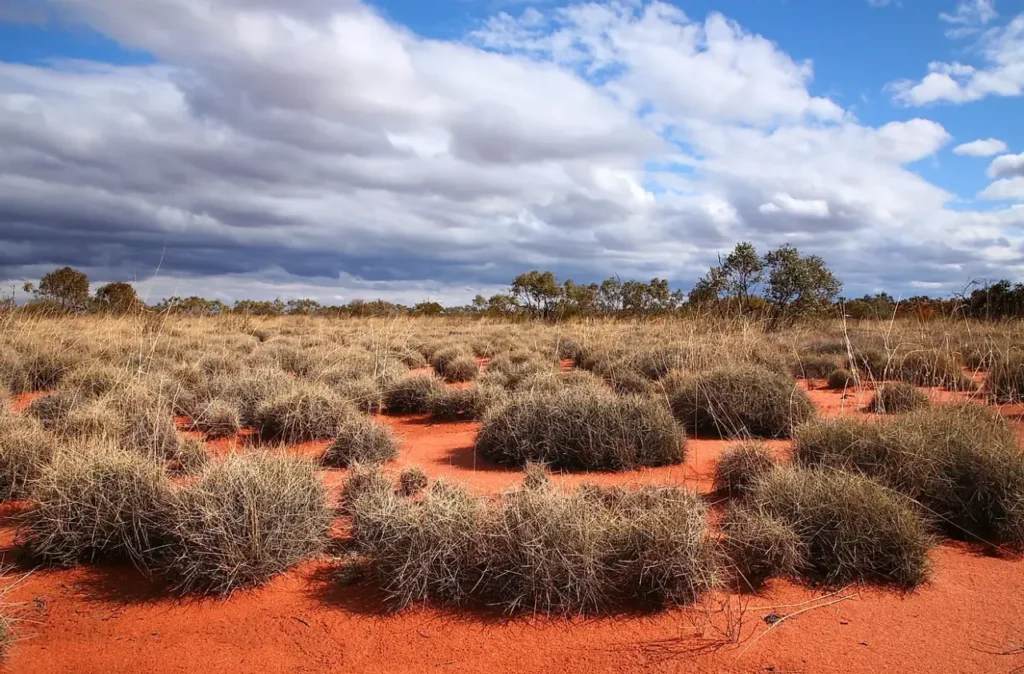
26. Dasht-e Lut
Situated in southeastern Iran, Dasht-e Lut is one of the hottest and driest deserts on Earth. It features stunning sand dunes, salt plains, and unique geological formations. The desert is a UNESCO World Heritage site and attracts adventurers and photographers from around the world.


27. Karoo Desert
Located in South Africa, the Karoo Desert is a semi-desert region known for its unique flora and vast open spaces. It is a haven for stargazing enthusiasts due to its clear night skies and minimal light pollution.
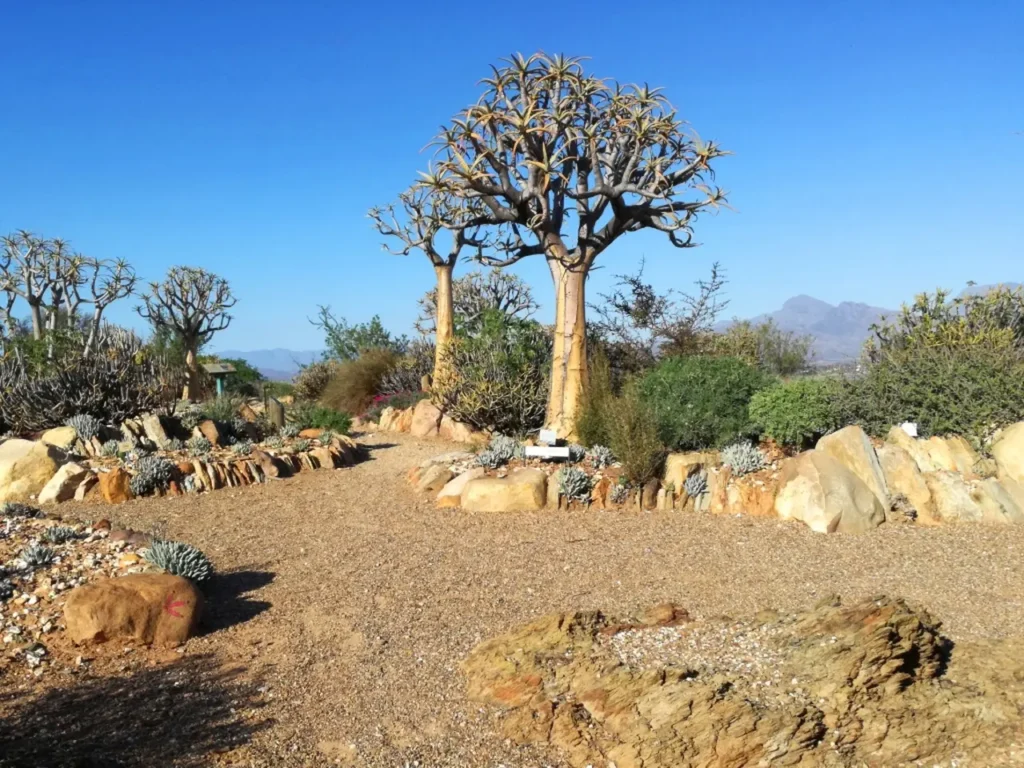
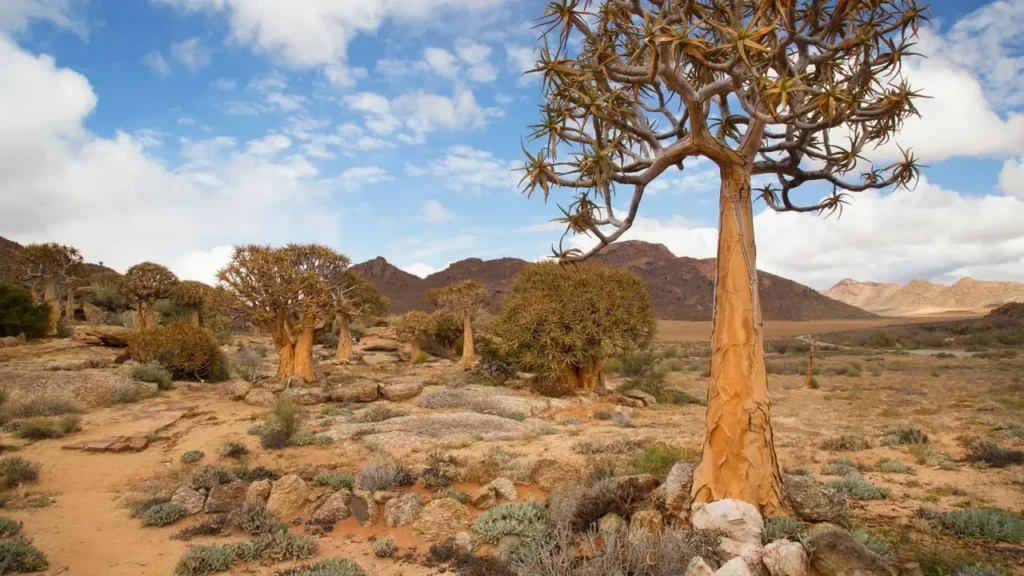
28. Libyan Desert
The Libyan Desert, also known as the Western Desert, is located in northeastern Africa, encompassing parts of Libya, Egypt, and Sudan. It is characterized by its vast sand seas, rocky plateaus, and ancient archaeological sites like the famous Temple of Amun at Siwa Oasis.
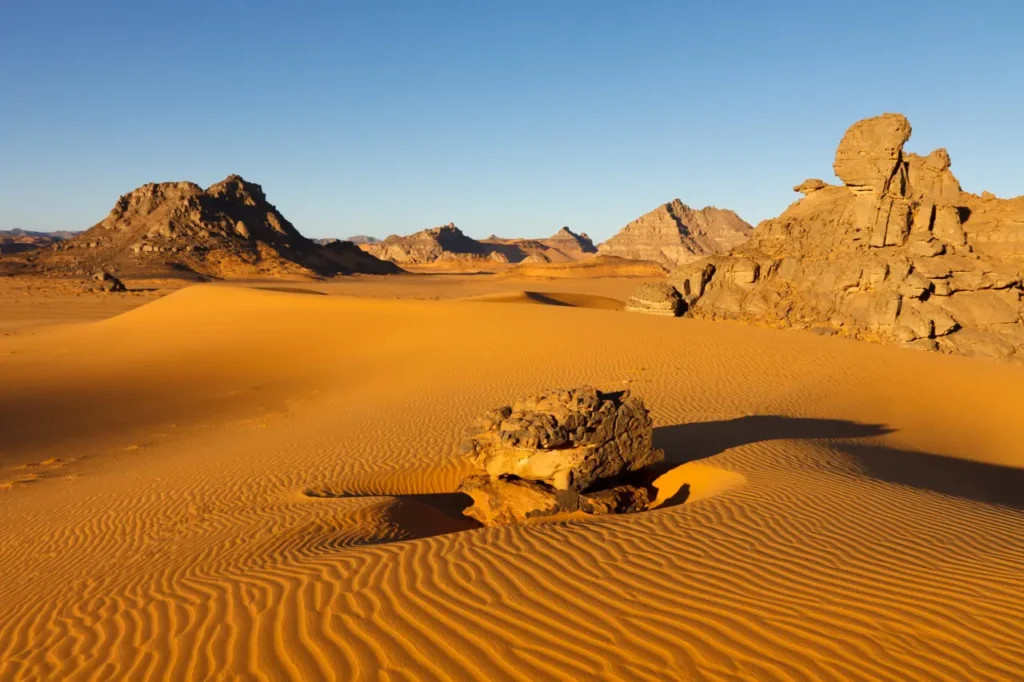
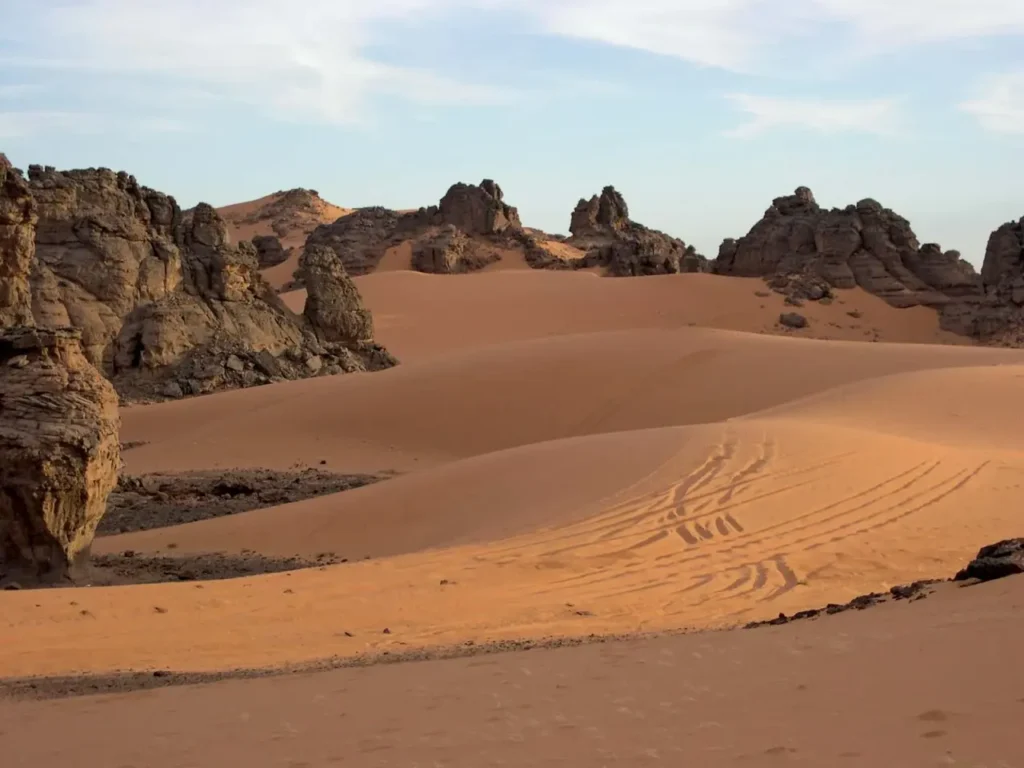
29. Central Asian Deserts
Central Asia is home to several deserts, including the Karakum, Kyzylkum, and Taklamakan Deserts. These deserts are characterized by their vast sand dunes, extreme temperatures, and unique cultural heritage. The region offers opportunities for desert safaris, camel riding, and exploring ancient Silk Road trading routes.


30. Black Rock Desert
The Black Rock Desert is a famous desert located in northwestern Nevada, United States. It offers a unique desert experience, whether through attending the Burning Man Festival or exploring the vast and serene landscape on your own.

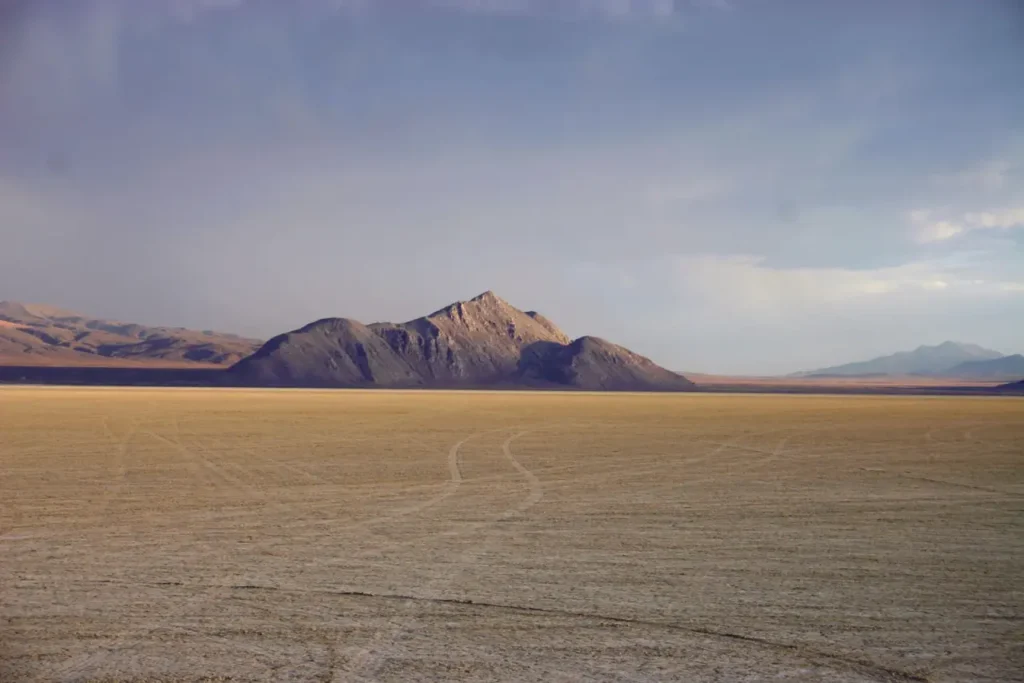
31. Great Basin Desert
The Great Basin Desert is a vast desert region located in the western United States. It offers a rugged and captivating desert experience, with its vast landscapes, unique plant and animal life, and opportunities for outdoor adventure and cultural exploration.


32. Syrian Desert
The Syrian Desert, also known as the “Badia,” is a vast desert region located in the Middle East. It has a rich historical and cultural heritage and is always advisable to stay updated with travel advisories and consult with relevant authorities before planning a trip to any region affected by conflict.


These deserts are some of the world’s famous deserts, each offering unique landscapes, geological features, and cultural significance. They attract travelers from around the globe who are fascinated by the beauty and harshness of these arid environments.

Each of these deserts has its own distinct characteristics, offering visitors a chance to witness the beauty and harshness of these unique ecosystems. Whether it’s the vast sand dunes, rocky landscapes, or cultural experiences, these deserts provide a glimpse into the awe-inspiring wonders of our planet.

Hope this article is useful for readers. See you next topic!

